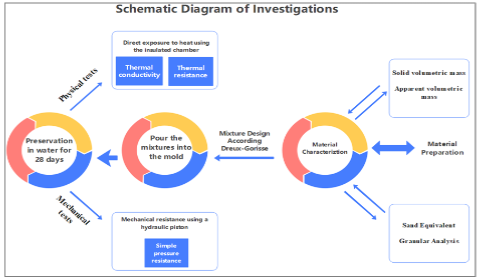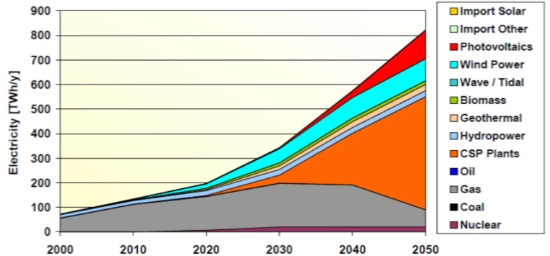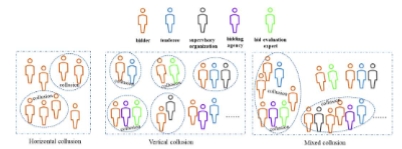Value-based analysis of the negotiation for the construction of a church dome
Abstract
In the construction industry, the signing of contracts between contractors and clients is a common practice. The entities signing these contacts have vastly different objectives in the context of the project: the contractor is motivated by the achievement of profit, while the client has objectives that can be economic, aesthetic, related to completion time, etc. According to negotiation theory, the greater the difference between the objectives of the sides, the better the contracts that can be achieved in the negotiation. Therefore, the analysis of a contractor-client negotiation in the building industry should be based on a complete understanding of the objectives of the sides. Kenney’s Value-Focused Thinking (VFT) provides a framework on which such understanding can be achieved. This paper presents a VFT-based methodology to analyze the contractor-client negotiations in the context of construction projects. The methodology is illustrated by analyzing, in retrospective, the negotiation between a construction company and a client regarding the construction of a dome for a church. The results show the usefulness of analyzing the negotiation from the point of view of the sides’ objectives.
References
[1]Keeney RL. Value-Focused Thinking. Harvard University Press; 1992.
[2]Verheij H, Augenbroe G. Collaborative planning of AEC projects and partnerships. Automation in Construction. 2006; 15(4): 428-437. doi: 10.1016/j.autcon.2005.06.011
[3]Murtoaro J, Kujala J. Project negotiation analysis. International Journal of Project Management. 2007; 25(7): 722-733. doi: 10.1016/j.ijproman.2007.03.002
[4]Branconi CV, Loch CH. Contracting for major projects: eight business levers for top management. International Journal of Project Management. 2004; 22(1): 119-130. doi: 10.1016/S0263-7863(03)00014-0
[5]Koskinen KU, Mäkinen S. Role of boundary objects in negotiations of project contracts. International Journal of Project Management. 2009; 27(1): 31-38. doi: 10.1016/j.ijproman.2007.10.006
[6]Oliveira RAF, Lopes J, Abreu MI. Insights from a project procurement strategy through an action research. Procedia Computer Science. 2021; 181: 1002-1010. doi: 10.1016/j.procs.2021.01.275
[7]Lippman SA, McCardle KF, Tang CS. Using Nash bargaining to design project management contracts under cost uncertainty. International Journal of Production Economics. 2013; 145(1): 199-207. doi: 10.1016/j.ijpe.2013.04.036
[8]Tosselli L, Bogado V, Martínez E. A repeated-negotiation game approach to distributed (re)scheduling of multiple projects using decoupled learning. Simulation Modelling Practice and Theory. 2020; 98: 101980. doi: 10.1016/j.simpat.2019.101980
[9]Ng ST, Li W. A parallel bargaining protocol for automated sourcing of construction suppliers. Automation in Construction. 2006; 15(3): 365-373. doi: 10.1016/j.autcon.2005.07.004
[10]Shang T, Zhang K, Liu P, et al. What to allocate and how to allocate?—Benefit allocation in Shared Savings Energy Performance Contracting Projects. Energy. 2015; 91: 60-71. doi: 10.1016/j.energy.2015.08.020
[11]Tang Y, Chen Y, Hua Y, et al. Impacts of risk allocation on conflict negotiation costs in construction projects: Does managerial control matter? International Journal of Project Management. 2020; 38(3): 188-199. doi: 10.1016/j.ijproman.2020.03.002
[12]Kang CC, Feng CM, Kuo CY. A royalty negotiation model for BOT (build-operate-transfer) projects: The operational revenue-based model. Mathematical and Computer Modelling. 2011; 54(9-10): 2338-2347. doi: 10.1016/j.mcm.2011.05.042
[13]Zhang X, Bao H, Wang H, et al. A model for determining the optimal project life span and concession period of BOT projects. International Journal of Project Management. 2016; 34(3): 523-532. doi: 10.1016/j.ijproman.2016.01.005
[14]Bao H, Peng Y, Ablanedo-Rosas JH, et al. An alternative incomplete information bargaining model for identifying the reasonable concession period of a BOT project. International Journal of Project Management. 2015; 33(5): 1151-1159. doi: 10.1016/j.ijproman.2014.12.004
[15]Song J, Jin L, Zhao Y, et al. Using bargaining-game model to negotiate compensation for the early termination of BOT highway projects. Transportation Research Part A: Policy and Practice. 2017; 105: 197-209. doi: 10.1016/j.tra.2017.06.017
[16]Chen YM, Wang SC. An evolutionary compensatory negotiation model for distributed dynamic scheduling. Applied Soft Computing. 2008; 8(2): 1093-1104. doi: 10.1016/j.asoc.2007.05.018
[17]Badenfelt U. Fixing the contract after the contract is fixed: A study of incomplete contracts in IT and construction projects. International Journal of Project Management. 2011; 29(5): 568-576. doi: 10.1016/j.ijproman.2010.04.003
[18]Miranda-Sarmento J, Renneboog L. Renegotiating public-private partnerships. Journal of Multinational Financial Management. 2021; 59: 100661. doi: 10.1016/j.mulfin.2020.100661
[19]Kumar R, Rangan US, Rufín C. Negotiating complexity and legitimacy in independent power project development. Journal of World Business. 2005; 40(3): 302-320. doi: 10.1016/j.jwb.2005.05.006
[20]Stapper EW. Contracting with citizens: How residents in Hamburg and New York negotiated development agreements. Land Use Policy. 2021; 111: 105743. doi: 10.1016/j.landusepol.2021.105743
[21]Adebayo E, Werker E. How much are benefit-sharing agreements worth to communities affected by mining? Resources Policy. 2021; 71: 101970. doi: 10.1016/j.resourpol.2020.101970
[22]Jalbert K, Dickinson KL, Baka J, et al. Influence in the right-of-way: Assessing landowners’ risk decision-making in negotiating oil and gas pipeline easements. The Extractive Industries and Society. 2023; 14: 101276. doi: 10.1016/j.exis.2023.101276
[23]Clemen RT. Making Hard Decisions: An Introduction to Decision Analysis. Duxury Press; 1996.
[24]Hammond JS, Keeney RL, Raiffa H. Smart Choices. Harvard Business School Press; 1999.
[25]Edwards W, Miles RF, von Winterfeldt D. Advances in Decision Analysis. Cambridge University Press; 2007.
[26]Raiffa H. Negotiation Analysis: The Science and Art of Collaborative Decision Making. Harvard University Press; 2007.
Copyright (c) 2024 Mario Luis Chew Hernández, Leopoldo Viveros Rosas, Raúl Gómez Gómez-Tagle

This work is licensed under a Creative Commons Attribution 4.0 International License.












